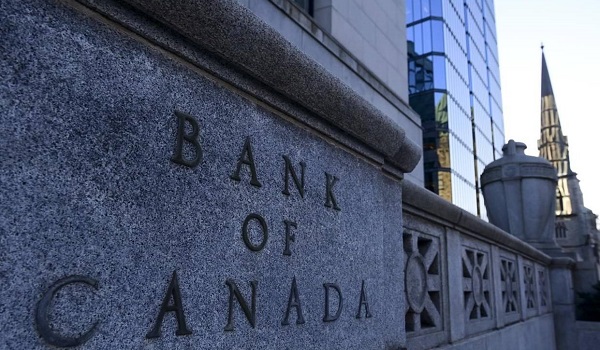Bank of Canada is anticipated to keep interest-rate steady till the end of the year
The Bank of Canada is expected to cap another tumultuous year for monetary policy with a stand-pat decision this week that keeps interest rates steady while offering few hints about what comes next.
The central bank has held its policy rate at 5 per cent since July, while leaving the door open to further increases if inflation doesn’t move lower. But over the past month, the likelihood of additional monetary-policy tightening appears to have declined.
Bank of Canada Governor Tiff Macklem said in a November speech that interest rates “may now be restrictive enough,” and that excess demand in the economy “is now gone” – his clearest comments to date suggesting that interest rates have peaked.
This message was reinforced by a string of data showing the Canadian economy is struggling to grow under the weight of high borrowing costs, and that inflation is finally moving in the right direction again, after trending higher over the summer.
Bay Street analysts, however, don’t expect Mr. Macklem and his team to adopt a noticeably more dovish tone in Wednesday’s statement-only rate announcement. The bank has an incentive to keep talking tough about the possibility of rate hikes to prevent a further decline in bond yields – which have retreated significantly from their October peak – and a rebound in the housing market.
In the spring, house prices took off after the bank suggested that it was finished tightening monetary policy. It ended up raising rates two more times, in June and July, after economic growth came in stronger than expected and inflation remained stubbornly elevated.
“The threat of rate hikes helps the bank maximize the economic impact of the tightening already in the system, and lifting the mission accomplished banner too quickly would run the risk of stalling progress on short-term inflation expectations which remain uncomfortably high,” Toronto-Dominion Bank rate strategists, led by Andrew Kelvin, wrote in a note to clients.

With the annual rate of Consumer Price Index inflation dropping to 3.1 per cent in October – only slightly above the upper end of the bank’s inflation-control range – market speculation has shifted from whether the bank will tighten monetary policy further to when it might start cutting rates. The bank officially targets 2-per-cent CPI inflation.
Interest rate swap markets, which capture market expectations about monetary policy, are currently pricing in a more than 60-per-cent chance the bank starts cutting rates in March, according to Refinitiv data. But some economists think traders are getting ahead of themselves and that the bank is more likely to start cutting rates around the middle of next year.
“There have been some signs of core inflation moving more sustainably lower, but it remains too early to have a high level of confidence,” Simon Deeley, director of Canadian rates strategy at Royal Bank of Canada, wrote in a note to clients. He put the odds of the first cut happening in the third quarter of 2024 at 60 per cent.
Getting interest rates back down into neutral territory “will be a high hurdle as they just can’t afford another mistake,” Mr. Deeley said of the central bank. “Undershooting the inflation target is a more desired outcome than overshooting it.”
As it stands, the Bank of Canada is in a holding pattern: nervous about inflation moving up again and straining its credibility, but increasingly confident that monetary policy is doing the trick.
Higher interest rates make it more expensive for households and businesses to borrow money and service their debts. This lowers demand for goods and services and reduces upward pressure on consumer prices. In other words, the central bank is purposely slowing down the economy to put a brake on inflation.
Recent data suggest this is working. The country’s gross domestic product shrank at an annualized pace of 1.1 per cent in the third quarter, Statistics Canada said Thursday. It revised second-quarter GDP upward to show annualized growth of 1.4 per cent instead of the slight decline it had shown previously.
On Friday, Statcan said Canada added around 25,000 jobs in November. That was slightly higher than Bay Street estimates, although job growth was slower than population growth, leading the unemployment rate to rise one notch to 5.8 per cent.
Taken together, the data suggest the Canadian economy is growing at a sluggish pace, well below its potential, but avoiding an outright recession. That’s a sweet spot for the Bank of Canada, which has consistently said that it is not trying to cause a painful economic downturn to get inflation under control.
“The economy is approaching balance, and inflation has fallen from 8.1 per cent in June of 2022 to 3.1 per cent last month,” Mr. Macklem said in his speech last month. “We expect the economy to remain weak for the next few quarters, which means more downward pressure on inflation is in the pipeline.”
Crucially, three-month measures of core inflation, which strip out the most volatile price movements, are finally trending downward after getting stuck in the 3.5-per-cent to 4-per-cent range for much of this year.
But other signs of inflationary pressures remain higher than the bank would like. Average hourly wages, for instance, rose at an annual pace of 4.8 per cent in November – a pace the bank has said is not compatible with price stability.
This article was reported by The Globe and Mail















